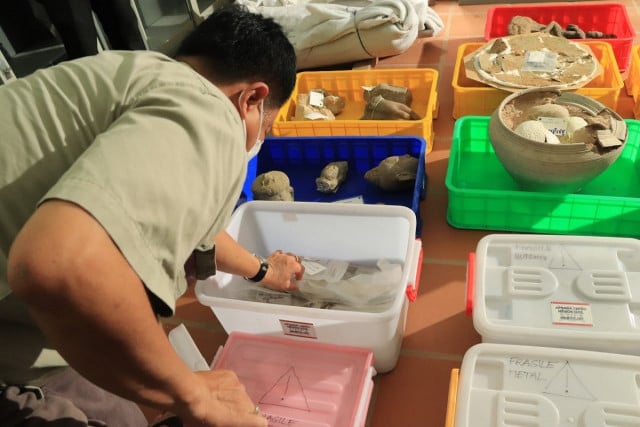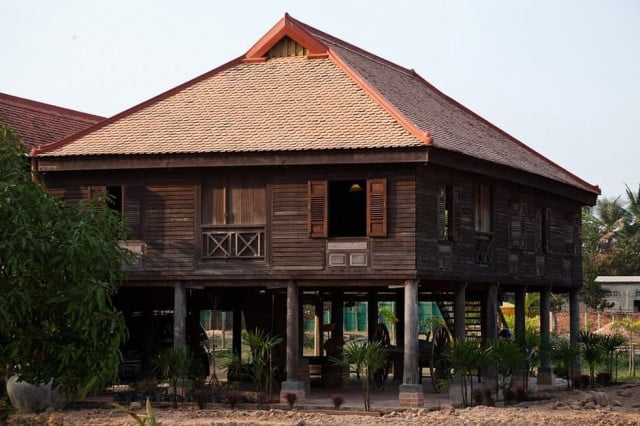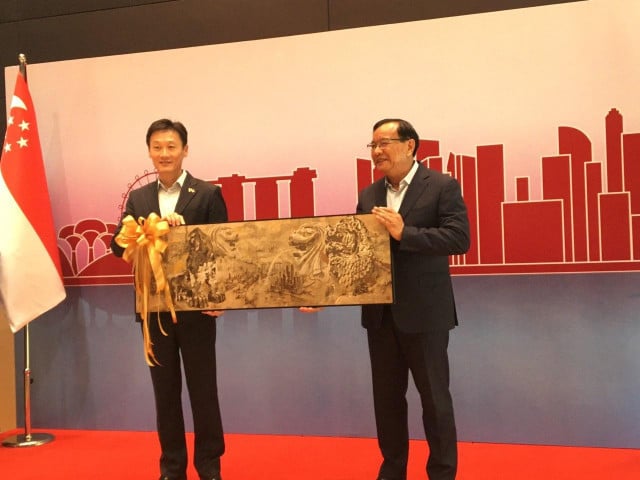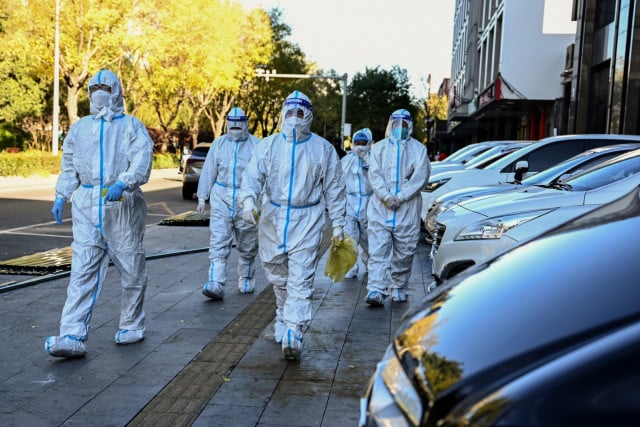Angkor Artifacts Returned to APSARA Custody

- By Kheav Moro Kort
- May 14, 2022 10:54 AM
Authority hails return of cultural treasures
PHNOM PENH– Experts from a French-based academic organization in Cambodia have handed over to the APSARA Authority 146 archeological artifacts mostly excavated at the western Mebon temple of Angkor between 2012 and 2017.
Items returned on May 11 by the École Française d'Extrême-Orient (EFEO), or French School of the Far East, included 11 wooden pillars and one stone inscription. The EFEO has been in charge of conservation work at Angkor since 1907.
Apsara Authority spokesman Long Kosal said the fragments and pieces had been kept for research and study purposes. The handover showed the EFEO’s willingness to cooperate with the APSARA Authority to preserve Cambodian cultural artifacts.
He said the pieces will be kept in one place for an inventory register and for future use, especially to put or match them with fragments found in the future.
The pieces are mostly of smooth and non-smooth pottery, soil for analysis, sandstone fragments, metal fragments (iron, copper, brass) and a Buddha statue made of wax placed in a large earthen pot with raw thread buried in the ground.
Deputy director of the Angkor International Center of Research and Documentation Tin Tina said this is not the first time the EFEO has handed over artifacts found in the West Mebon Temple to the APSARA Authority but this time the number of returned pieces was higher than before.
Other institutions have handed over artifacts found during the restoration and research in the Angkor site to the APSARA Authority, he said. Prior permission was needed if any international institution wanted to search for more of these artifacts.
Many ancient artifacts have been looted and ended up in warehouses, institutions, and some of the most famous museums in the United States and the United Kingdom. Those treasures were sold off during three decades of civil war and genocide through to the late 1990s.
Recently, Cambodia has called on the UK government to intervene in recovering its looted antiquities from two famous museums, the Victoria & Albert (V&A) and the British Museum.
The V&A is thought to possess more than 50 items while the British Museum is believed to have about 100 pieces on Cambodia’s priority list of pieces for return.
Culture Ministry Secretary of State Hab Touch said the ministry has been working to find evidence to reclaim the stolen pieces and has cooperated with the British Embassy and relevant authorities in this matter.
“The ministry has a special research or investigating team that is currently researching sites based on the documents available and living witnesses [former looters],” the official said.
In the process of recovering the stolen artifacts, Cambodia’s ministry of culture and both London museums are still at the talking stage.
“We have provided some evidence and requested both museums to show their acquisition process documents of those exhibits,” Touch said.
Previously, five of the 100 or so stone and bronze Khmer artifacts to be returned to Cambodia by the family of the late Douglas Latchford were sent from the United Kingdom to Cambodia.
On Sept. 11, 2020, Cambodia and the Latchford family signed an agreement for the return of more than 100 stone and bronze Khmer antiquities following three years of negotiations. Other pieces will be returned in batches.
Illicit procurement of cultural artifacts is a global issue. Cambodia has recovered lost artifacts from a private collector and other museums from countries such as Japan, Thailand, the UK, the US and France.
According to the 1970 UNESCO Convention on the Means of Prohibiting and Preventing the Illicit Import, Export, and Transfer of Ownership of Cultural Property, all artifacts or antiquities must be returned to the country of origin.















